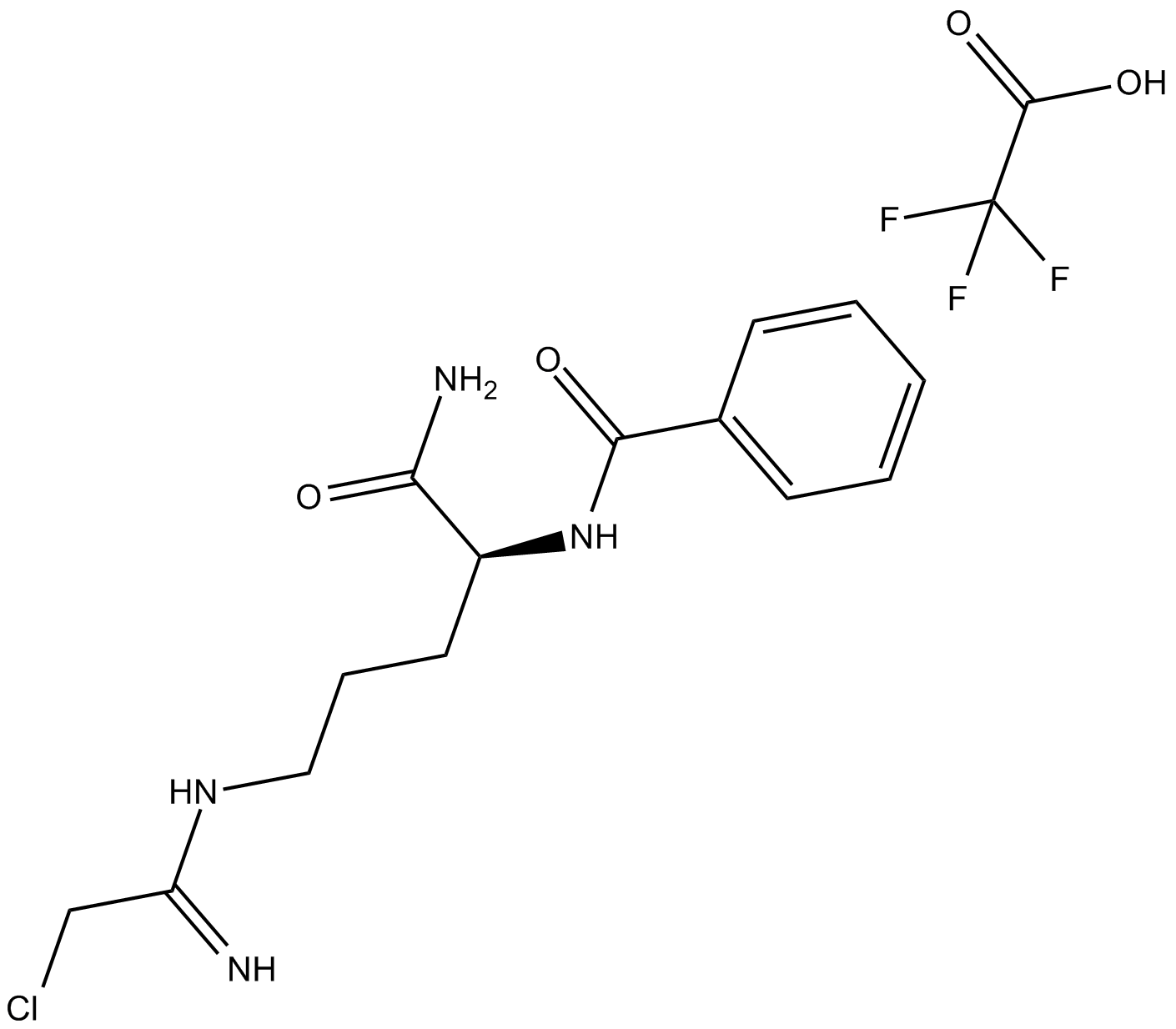Cl-Amidine (trifluoroacetate salt) |
| Catalog No.GC11032 |
Cl-Amidine (trifluoroacetate salt) is an orally active peptidylarginine deminase (PAD) inhibitor, with IC50 values of 0.8 μM, 6.2 μM and 5.9 μM for PAD1, PAD3, and PAD4, respectively.
Products are for research use only. Not for human use. We do not sell to patients.

Cas No.: 1043444-18-3
Sample solution is provided at 25 µL, 10mM.
IC50: 5.9 μM
Cl-Amidine is a PAD4 deimination activity inhibitor.
Protein arginine deiminase 4 (PAD4) can catalyze the post-translational modification of arginine residues on histones to form citrulline, which can change gene expression. Thus, dysregulated PAD4 activity has been implicated in cancer and rheumatoid arthritis.
In vitro: Previous study found that Cl-amidine antagonized the PAD4-mediated enhancement of the the p300GBD-GRIP1 interaction dose-dependently, and it was noteworthy that Cl-amidine treatment had only a minimal reduction in the efficiency of the interaction in Cys645S-transfected cells, thereby suggesting that the inhibitory effect of Cl-amidine was not a nonspecific one but was targeted at the active PAD4 enzyme. These results demonstrated that Cl-amidine was significantly more potent than F-amidine, consistent with its improved in vitro potency [1].
In vivo: Animal study showed that Cl-amidine could improve survival in a mouse model of cecal ligation and puncture (CLP)-induced septic shock. Cl-amidine was proven to play protective roles by restoring innate immune cells in BM, decreasing BM and thymus atrophy, increasing blood monocytes and blood/liver bacteria clearance, and attenuating pro-inflammatory cytokine production in a murine lethal sepsis model [2].
Clinical trial: So far, no clinical study has been conducted.
References:
[1] Luo, Y. ,Arita, K.,Bhatia, M., et al. Inhibitors and inactivators of protein arginine deiminase 4: Functional and structural characterization. Biochemistry 45(39), 11727-11736 (2006).
[2] Zhao T, Pan B, Alam HB, Liu B, Bronson RT, Deng Q, Wu E, Li Y. Protective effect of Cl-amidine against CLP-induced lethal septic shock in mice. Sci Rep. 2016 Nov 7;6:36696.
Average Rating: 5 (Based on Reviews and 33 reference(s) in Google Scholar.)
GLPBIO products are for RESEARCH USE ONLY. Please make sure your review or question is research based.
Required fields are marked with *




